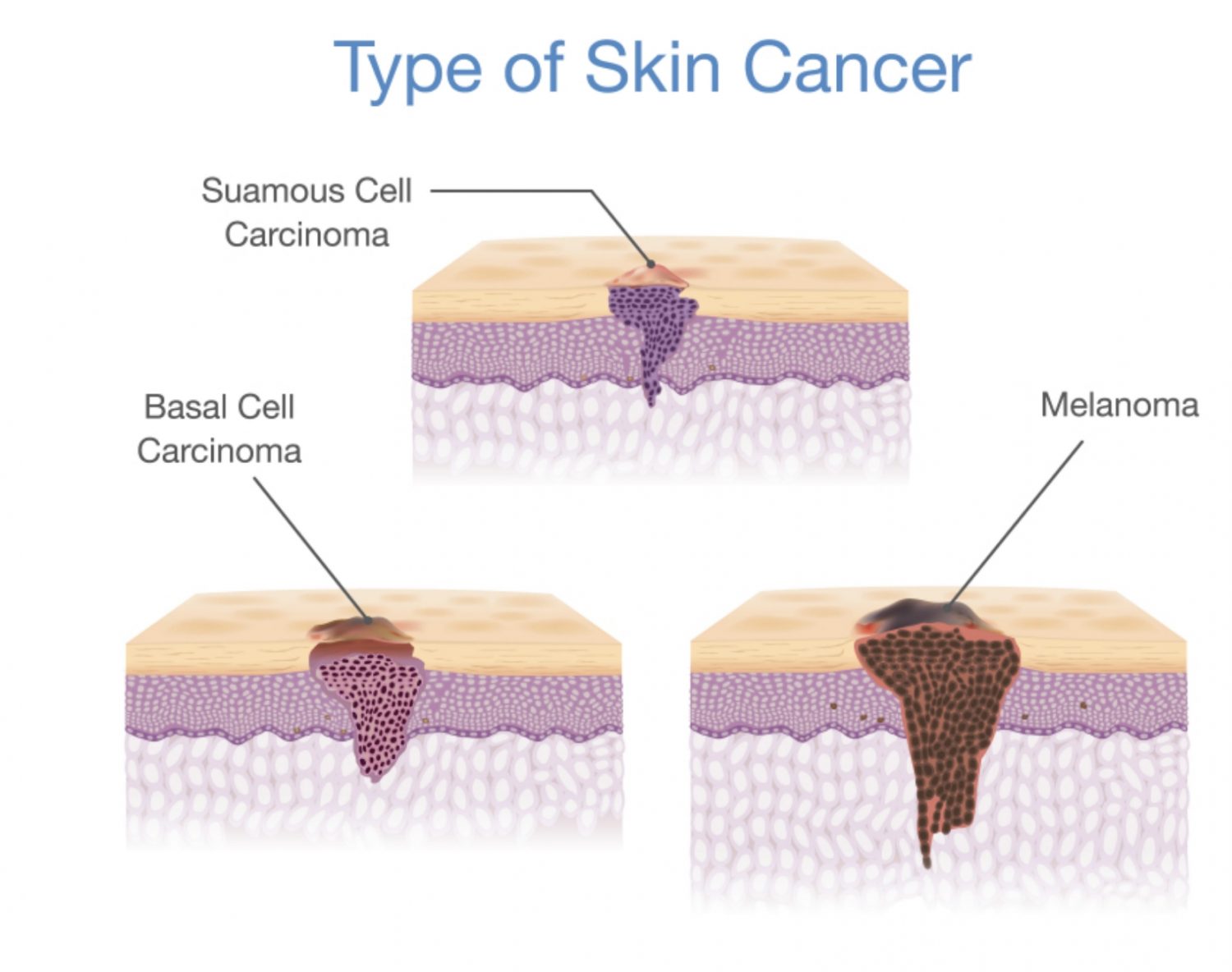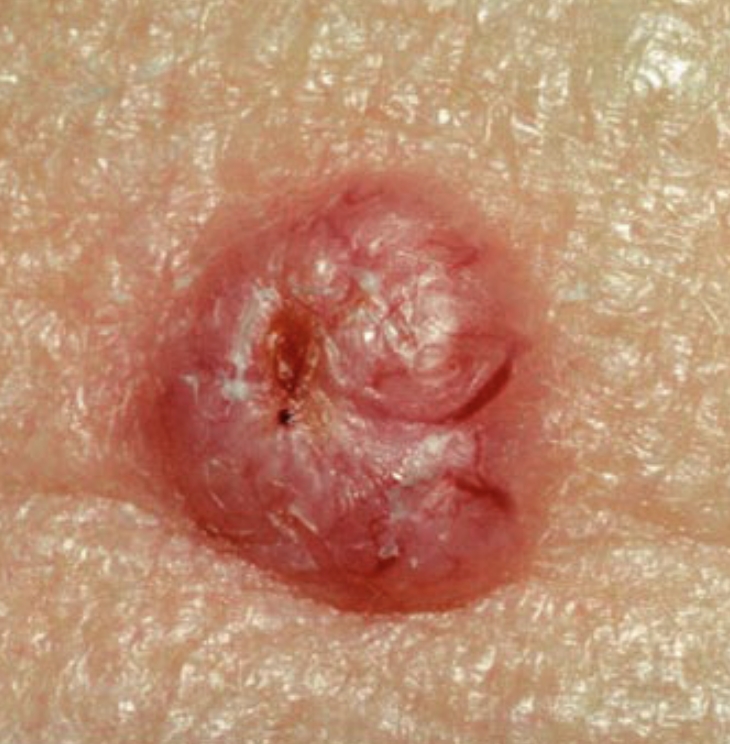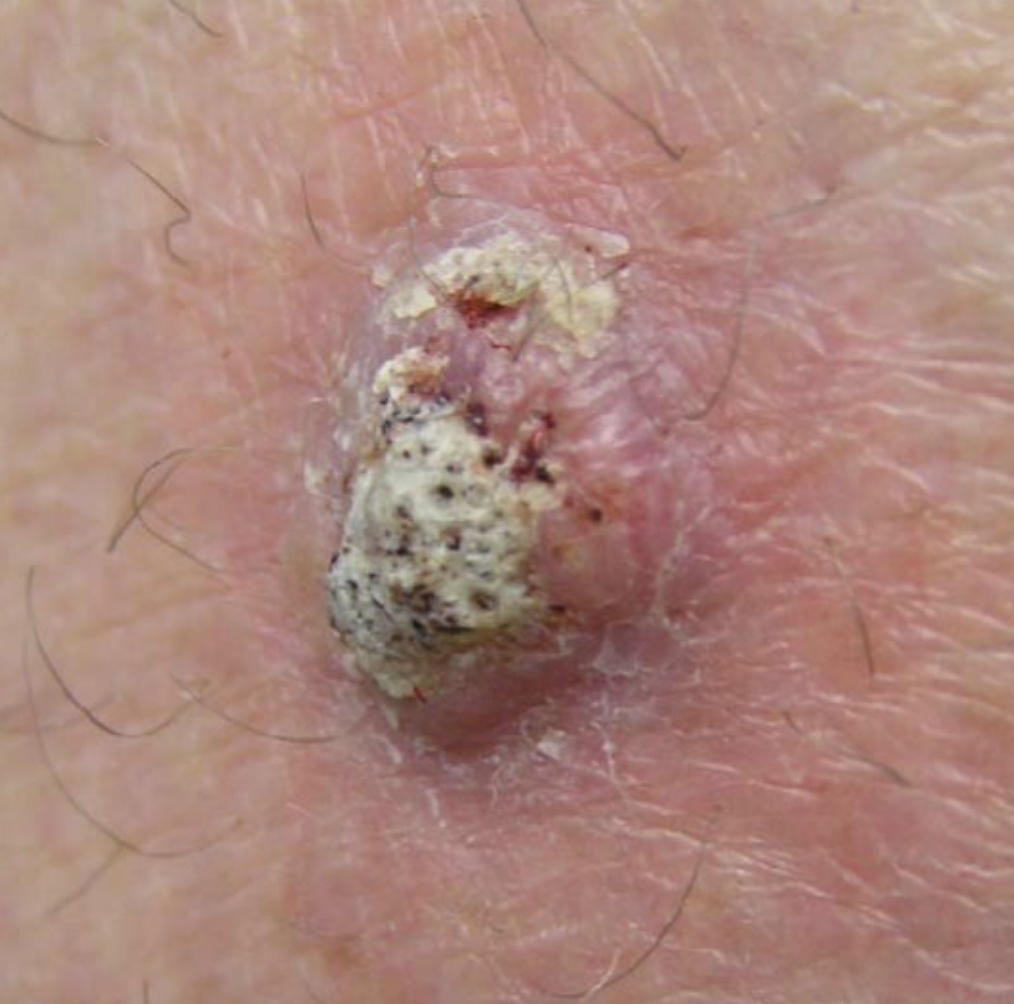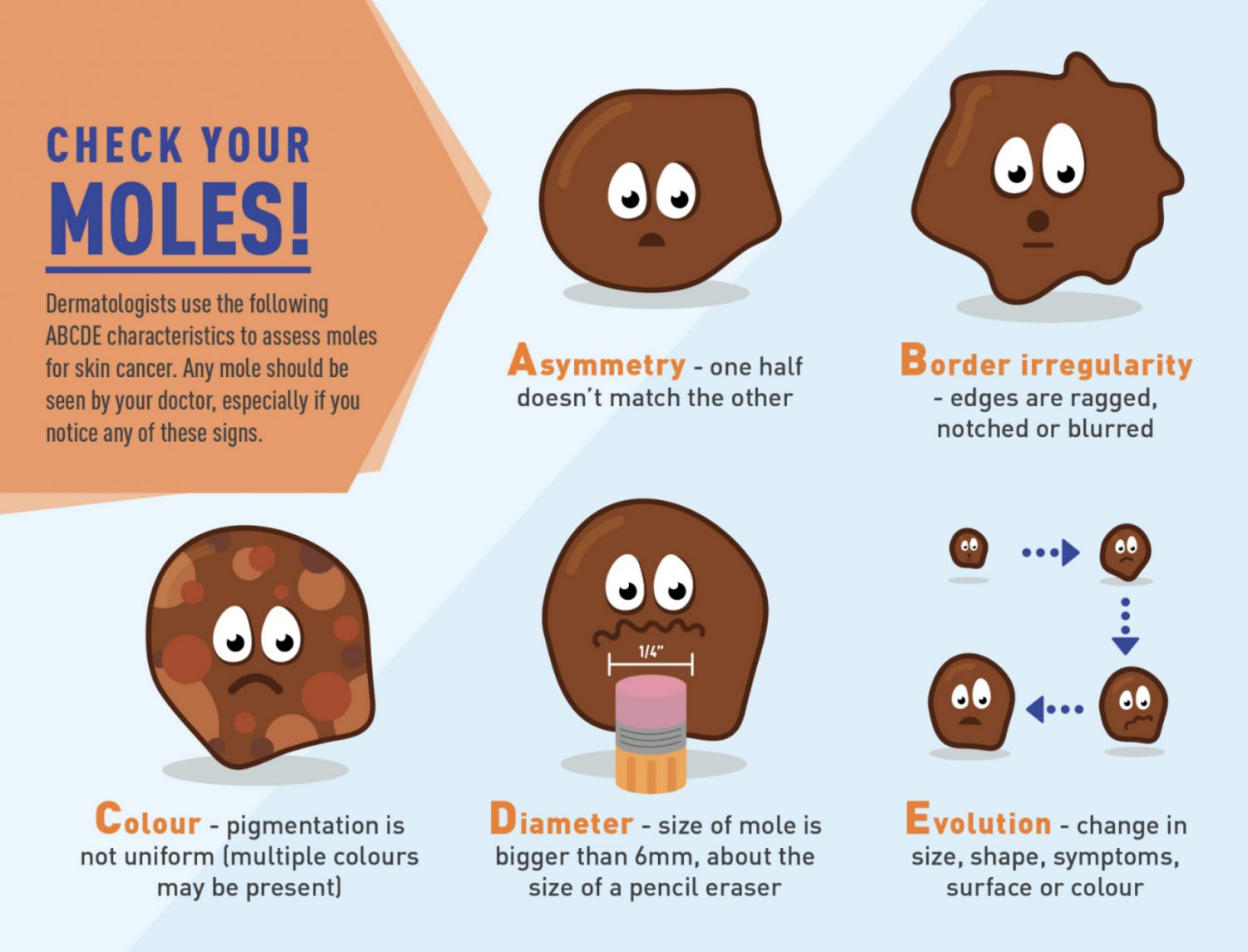Skin cancer is one of the most common cancers in Australia
there are three types of skin cancer:
1- Basal cell carcinoma (BCC)
2- Squamous cell carcinoma (SCC)
3- Melanoma
BCC is the most common type which consists 85% of all skin cancers
SCC stands next and constitutes 10% of skin cancer
The most dangerous one is Melanoma
Two in three Australian will be diagnosed with skin cancer by the age of 70

BCC (Basal cell carcinoma)
BCC might look only slightly different than normal skin.
BCC appears as pearly bumps with colours ranging from white to flesh cloloured.
Sometimes skin might be slightly raised or even flat .
Common signs of BCC you might notice:
- a lesion that bleeds easily
- a lesion that doesn't heal
- oozing or crusting spots
- appearance of a scar-like lesion without having injured the area
- irregular blood vessels in or around the lesion
- a lesion with a central depression

SCC (Squamous cell carcinoma)
SCC has differents shapes and colours
it grows rapidly in sun exposed areas such as head, face, neck and upper limbs.
It might look like a rough scaly patch
Invasive SCC looks like a raised, firm, red bump or nodule or an ulcer.
SCC may vary in size from a few millimeters to several centimeters if left untreated.

Melanoma
Melanoma most commonly presents on sun exposed skin as a new or changing mole or pigmentation
It usually appears in people who were exposed to sun for a long time
unprotected sun exposure is a major risk
other risk factors:
- tanning and sunburn in childhood
- short and intense periods of exposure to UV such a sunburns
- numerous numbers of moles
- a family history of melanoma in a first degree relative
- fair skin which burns rather than tan
- light or red hair
- freckles
- light eye colour

The sooner a skin cancer is diagnosed and treated, the better your chance of avoiding a surgery or, in the case of melanoma or other serious skin cancers, potential disfigurement or death.
become familiar with the look of your skin, so you can pick up any changes that might suggest a skin cancer.
Look for:
- any crusty, non-healing sores
- small lumps that are red, pale or pearly in colour
- new spots, freckles or any moles changing in colour, thickness or shape over a period of weeks to months.
Rules of early detection of melanomaa
Asymmetry
the lesion looks asymmetrical
Borders
uneven borders
Colour
dark black or has multiple colours
Diameter
greater than 5mm
Evolving
change in shape, size or colour

